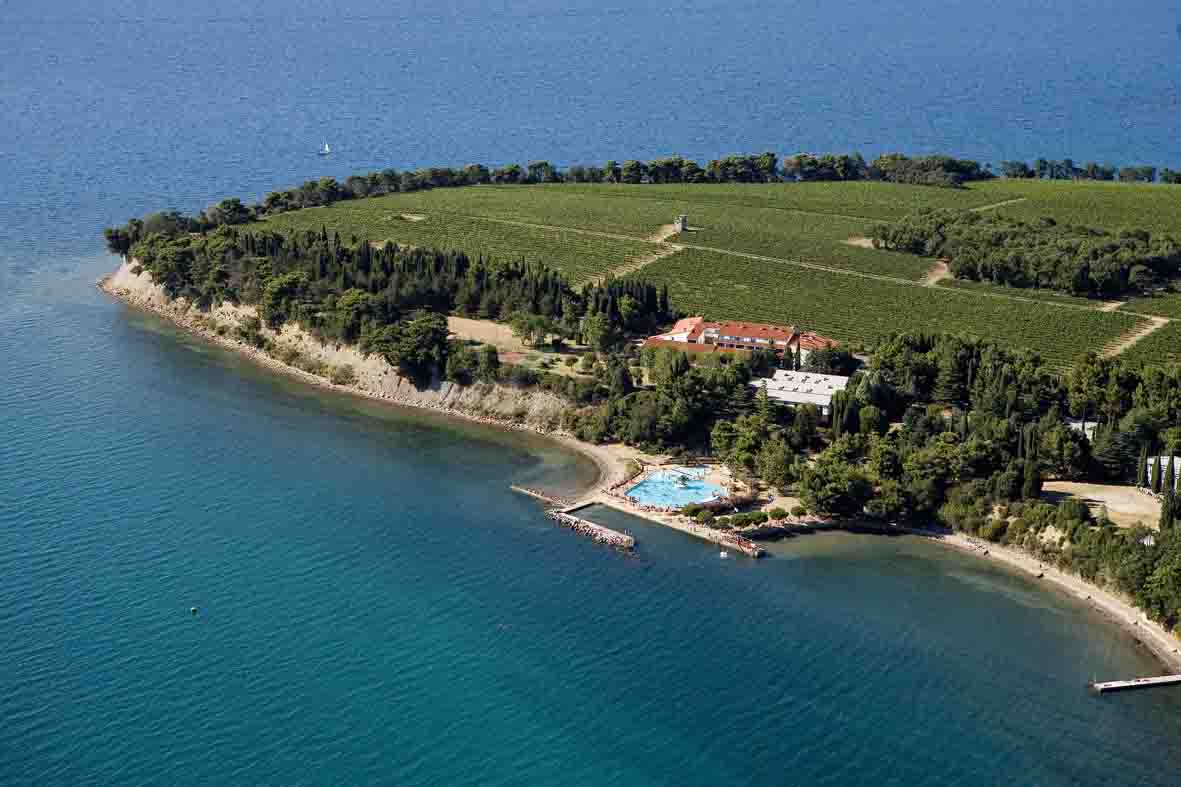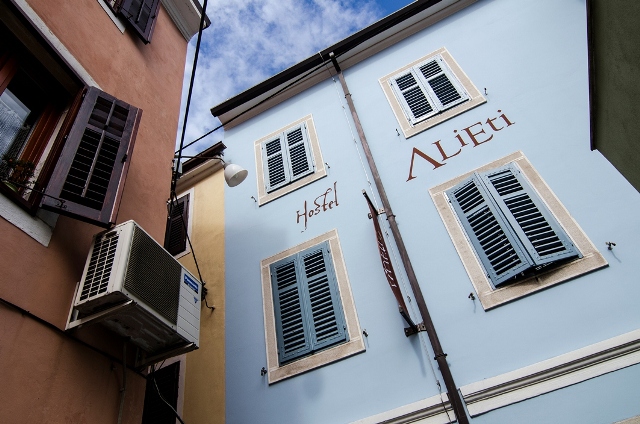It's nice to have a week or two off at the coast, but sometimes we only have a day or two to spare. A great thing about a small country like Slovenia is, we can visit the coast and experience everything from the traditional crafts to the glamour of city life in a really short time!
Looking at the map at the top of the Slovenian coast you’ll see the last cape before reaching the Italian border. This is where my trip started. Most people will recognise the name as a health resort for children, but apart from that there are some local houses and a few governmental resort buildings here. Because it is rather unspoiled it is also protected. You can swim freely and walk freely around. The
health resort also offers hostel rooms, but unfortunately you’re not allowed to camp here.
Environmentalists also made sure there’s a renovated natural park here. Plants like the olive tree, chestnut, bitter orange, lemon, tangerine, walnut, banana and date palms, plumbs, pomengrades and berry bushes grow here, with a few decorative plants like the asparagus. The park is done according to all the environmental laws. And next to it there is a fresh smelling coast with the sounds and smells of the sea. Sounds phenomenal, right?
This coastal sea is known for healthy tourism. I’m not talking about the rehabilitation centre, a camp with swimming pools or the kayak-canoe club. I’m talking about the sport park the locals are trying to keep alive to the best of their abilities. Coming to
Ankaran from Debeli Rtič (like I did) you pass the sign saying you’ve just exited the town and turn a sharp right towards the coast. You’ll find a bay with a small marina and a camping place with a wakening sporting facilities for beach volley ball and soccer.
But Ankaran also has rich history to offer. It was settled already in Roman times, which is evident by remains of the Roman outpost at the Srmin hill. The responsibility for the first tourist activities fall to the monastery of St. Nikolaj. In the past, already, the area was known for wine and thus the monks who had to find a way of making money, boosted the agricultural life of the area. Even before the monastery was abandoned the word got out this is a very healthy place to recuperate, so the health tourism has started – which boosted all sort of tourism latter on.
I don’t remember
Izola being mentioned much. I get a feeling it’s somewhat forgotten between other more glamourous coastal towns. Maybe because it’s right between
Koper and
Piran, or maybe because they’re still a little isolated for they used to be an island of their own. The town got connected to the mainland in the 18th century so it’s today just a limestone peninsula.
But it’s still a lively town. The people are known to be really cheerful that’s what they take two days to celebrate the olives, wine and fish. Sounds delicious – right? But the city is also a cultural treasure, for it was never taken by Turks and kept the classical ancient narrow streets a coastal town should have. The main cultural attraction is the church of St. Maver, the palace of Besenghi degli Ughi, the house of Manzioli, the Lovisato house and the growing street museum of Izola – check it out for your self!
.jpg)
I’d also like to point out the town beach. The end of the peninsula is a real grassy park with some trees to provide the shade and a swimming facility of the urbane standards. You can enter water on the concrete platform, by stairs or simply jump in. The beach is really neat and free, so you will not mind if the water is not so crystal clear as you’d prefer.
You can sleep in a
Hostel Alieti which is located in the heart of historic town centre of Izola. It offers 25 beds in small dormitories on three floors and is situated near Izola’s main square Trg Manzioli, 100 meters from the sea, 500 meters from Izola’s town beach at Svetilnik and 300 meters from the bus station.
Piran is closed for tourist traffic, so you should respect this and park in one of the parking houses (or if you know a hidden free of charge spot) and take the gratis bus to the centre of this protected coastal town.
I don’t know how to describe one of the most beautiful Slovenian cities, but everybody who was there can easily picture the narrow labyrinth of streets, the stairs, passages, colourful houses and the main Tartini square. And even if it seems this town sleeps most of the year, the tourists in the summer make it come alive again.
The Saturday market and seasonal stands offer Slovenian and imported articles, and you can always try something local (which you can also afford) when shopping for a souvenir. This will also be of help to the local economy.
The beach is open to the public and your dreams to sit down for a cup of coffe and then simply jump into the sea become a reality here! On both sides of the peninsula a bay with a beach opens up. If we look from the peak of it towards Fiesa (or the bay of Strunjan) we can see where the wall marks the end of the town beach and from then on you’ll find more intimate corners where you can sunbathe topless – or even bottomless. Towards the bay of Piran the beach is more touristy and more commercial, because it’s right next to the city hotels.
My last stop was in
Sečovlje. I’ve never saw them in person and didn’t care much about the route (didn’t have my navigator anyway). I just followed the coastal road through Portorož (a bit too shinny for me to include it in the natural-cultural route) I passed Lucija and just before the Croatian border I saw a sign for Sečovlje. This was a steep and paved road, maybe even built by ancient Romans, but it was leading in the right direction. At the foot of the hill I drove down I found a free(!) parking and for the entrance to the salt plant I payed the student price of 3€.
.jpg)
You get to see everything – from the museum to the protected wetlands and the traditional art of getting salt, which proves how they’ve got it in the past. There are 45 protected species of plants in the natural park Sečoveljske soline and 80 different kind of birds nest there regularly with 200 other species of birds coming here from time to time.
There are also other abandoned salt plants in Slovenia and many among them are protected, but the one in Sečovlje is the most famous and visited. In the Lera part they still produce salt, but the rest is protected as a natural monument. Not to mention the whole area is a giant open air museum.
When I talked to the people here a few year ago, they said that local students are not too keen to work here over the summer, so they have to look for workers from all over the continent. If you’re among the people who have to work through the summer you might look into this option, for at least you’ll get a change of scenery. True, the people here are very particular about their food (and above all about their coffee), but you can learn everything and what’s better than a nice swim in the refreshing sea after a day’s shift?
Or, you can visit the sea just for fun. I’ve left out some other places, which you can also explore, from the relaxing
Strunjan to always loud
Lucija and the glamourous
Portorož … but there’s probably something else as well.
Patricija Turnšek
Translation: Borut Jurišić
.jpg)

.jpg)

.jpg)